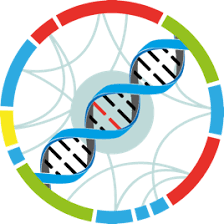Study : BIC1 acts as a transcriptional coactivator to promote brassinosteroid signaling and plant 14 1 growth
Identification
Name
BIC1 acts as a transcriptional coactivator to promote brassinosteroid signaling and plant 14 1 growth
Identifier
dXJuOkVWQS9zdHVkeS9QUkpOQTYzMTkxMw==
Description
The BRASSINAZOLE-RESISTANT 1 (BZR1) transcription factor family plays an essential role in plant brassinosteroid (BR) signaling, but the signaling mechanism through which BZR1 and its homologs cooperate with certain coactivators to facilitate transcription of target genes remains incompletely understood. In this study, we used an efficient protein interaction screening system to identify blue-light inhibitor of cryptochromes 1 (BIC1) as a new BZR1-interacting protein in Arabidopsis thaliana. We show that BIC1 positively regulates BR signaling and acts as a transcriptional coactivator for BZR1-dependent activation of BR-responsive genes. Simultaneously, BIC1 interacts with the transcription factor PIF4 to synergistically and interdependently activate expression of downstream genes including PIF4 itself, and to promote plant growth. Chromatin immunoprecipitation assays demonstrate that BIC1 and BZR1/PIF4 interdependently associate with the promoters of common target genes. In addition, we show that the interaction between BIC1 and BZR1 is evolutionally conserved in the model monocot plant Triticum aestivum (bread wheat). Together, our results reveal mechanistic details of BR signaling mediated by a transcriptional activation module BIC1/BZR1/PIF4 and thus provide new insights into the molecular mechanisms underlying the integration of BR and light signaling in plants. Overall design: Wild type Col-0 and BIC1-YFP seedlings grown under long-day conditions chamber for 10 days and were collected. Three replicates were prepared for each sample. RNA was extracted using an ethanol precipitation protocol and Trizol (Invitrogen) reagent. Libraries were constructed and further sequenced on Illumina HiSeq. 2000 platform (Illumina Inc., USA) with three independent biological replications for each sample. After screening and trimming, clean reads were mapped to the Arabidopsis thaliana genome (TAIR10, www.arabidopsis.org). Cufflinks methods were used for determination of expression values. Genes with estimated absolute fold changes ≥ 0.5 were identified as reliable DEGs.
Genotype
| Accession number | Name | Taxon |
|---|
